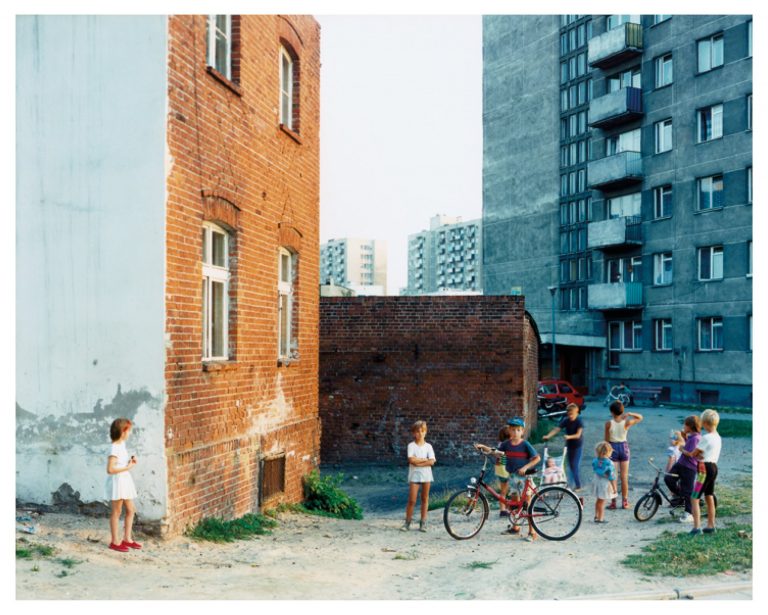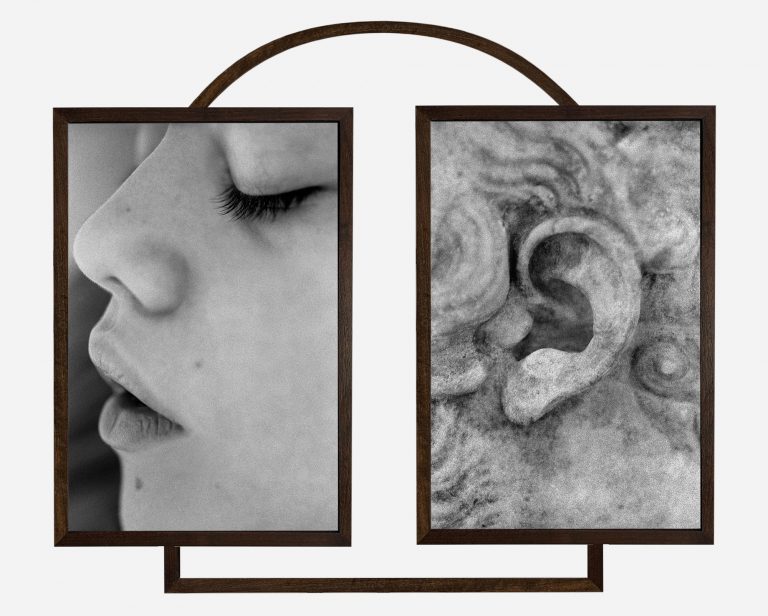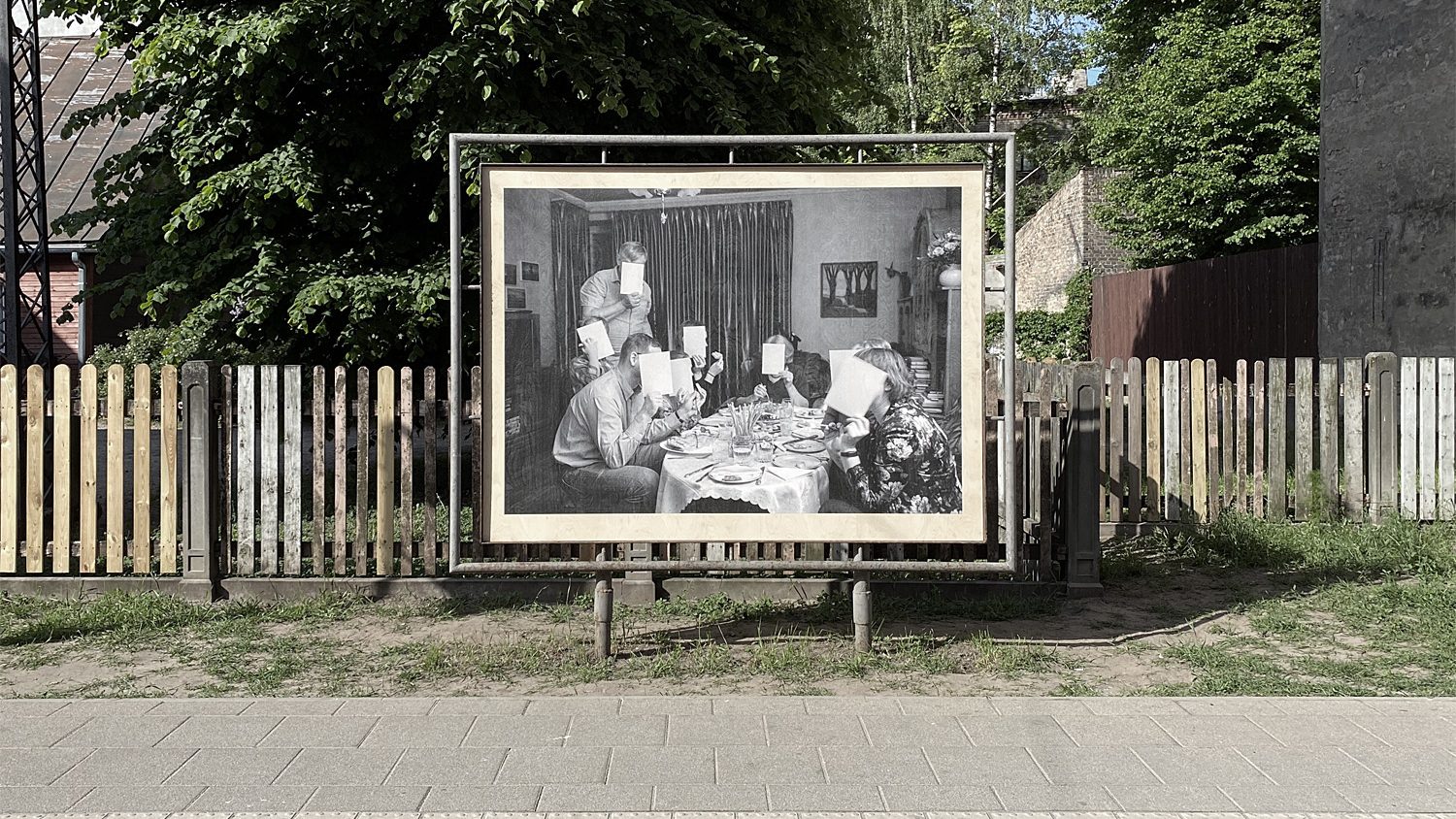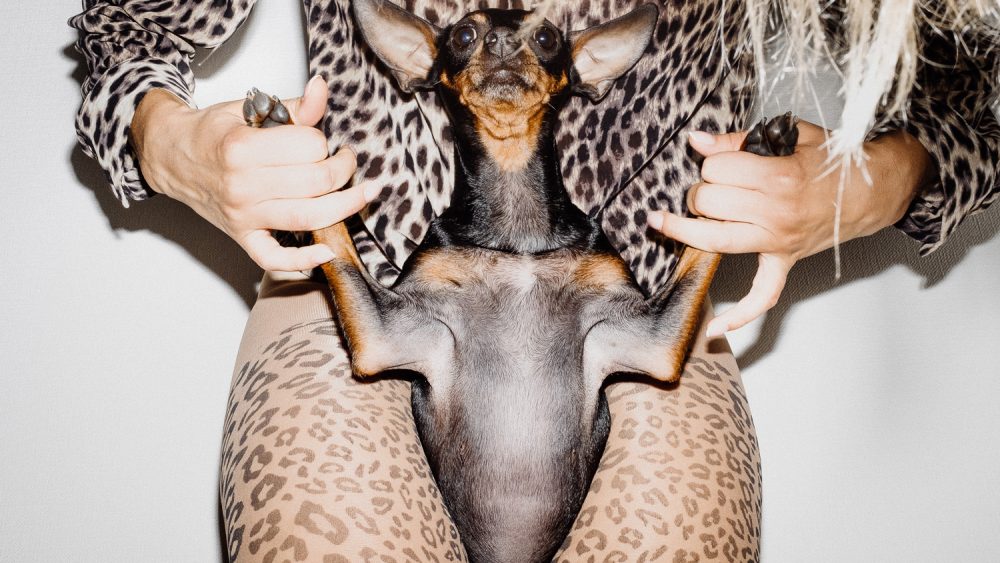Reaching audience in the future: photobooks, galleries or virtual reality exhibitions?
Łukasz Rusznica, art director of TIFF Festival, Poland:
Maybe I am sentimental, but I have a feeling that direct experience will still be the most important form of contact with the audience. Online makes us tired. Perhaps a photo book will become an even more popular form of a photographer’s activity. It is a physical object, and at the same time, it can be used in your private space, without fear of being surrounded by a large group. I am not a futurologist so I don’t want to create future scenarios.
Liza Premiyak, managing editor, The Calvert Journal, UK:
There will always be space for well-thought-out photo books and shows. I really hope that exhibitions return and online events and festivals continue into 2021 and beyond, so that more photographers can participate from different corners of the world. We need a programme of events that everyone has access to. I’d love to see a platform emerge that helps photographers and experts support each other and build a community away from Instagram.
Nadya Sheremetova, curator, director of FotoDepartament, Russia:
We already see exhaustion from online events, even though it reduces the distance and helps reach any professional event, involves a range of the most advanced participants in our field and offers an opportunity to influence it. Yet only a truly relevant question will help gather an audience – only then people will be ready to spend their time on it.
However, I believe in the possibilities of web and digital or on-screen events for exhibitions. Because there are still many ways to create engaging narratives on the screen. It is a big challenge to create such projects online, precisely because the viewer’s attention will need to be more skilfully controlled. At the same time, any institution, as well as the author, increasingly needs not only to know about the mechanisms of popular social networks operation, where an active audience spends its time and attention, but also communication skills to speak on different platforms about topics and issues in a visual language with a commentary, editing, and screen format. I’m thinking about how you can show your photo projects on streaming and TV platforms. It better not be multimedia films and slideshows, but what photography actually produces – the border of our relationship with the reality around us who are perceiving. Such questions give a challenge to gaining a new audience and a new question to the essence of photography as a medium.

Jenny Nordquist, Director of Landskrona Photo Festival, Sweden:
One of my favourite online projects was Mack Live which brought us into the private homes of established photographers and showed their unique photo book collections. It was informative but at the same time amusing, almost like MTV Cribs but featuring the great photographers we admire rather than rappers.
The audience will demand more sophisticated ways to connect digitally, but we cannot neglect the importance of real-life experiences. At Landskrona Foto Festival, our focus on innovative outdoor exhibitions brought photography to a wider audience at a time when visiting the traditional institutions was compromised.
Lyolya Goldstein, art curator and critic, photo editor at Bird in Flight Magazine, Ukraine:
A huge intention of one of the most important American art fairs Art Miami invited everyone to the online special project Miami Art City, which was supposed to take place in the VR format. After a while they decided that for now everything is too unpredictable, as no one sees any improvement in sales, and no one can promise normal traffic at the event, so they cancelled. For now it is obvious that all attempts to make not even VR but 3D galleries exactly like the real ones are still just the attempts. Well, I hope the new ways of interaction with the audience will come to our lives. The ‘old fashioned’ white cube format of exhibiting hopefully will not disappear and after the lockdown we will go to look at art in galleries, museums, and art biennales, as well as travel to buy art in person at international fairs.
Branislav Stepanek, Editor-in-chief, Fotonoviny/The Photo Newspaper, Slovakia:
Cultural industry follows the economic rules just like any other, and those who can’t cope and reach their audiences by whatever means will inevitably cease to exist. But while enjoying new ways of consuming art (whatever they might be), I’d like to stress that we must not forget the fundamental practice of experiencing art live. To fully, deeply perceive the magical spirit of art, one must physically come to the gallery/museum/public space and stand in front of a photograph, or hold an artist book in one’s hand, or even experience a digital artwork that was made digital in the first place. It may seem deceptive (and especially with the photographic medium!), but physical experience of art cannot be replaced.
Anna Tellgren, Curator of Photography, Moderna Museet, Sweden:
For institutions – to work with digital media in another way. But also to find strategies on how to make visits safe again.
For photographers – maybe the photo book will be even more important. I am looking forward to seeing how photographers and artists will work with social media, moving images, magazines – publishing – in a different and creative way.
Peter Puklus, artist, Hungary:
Despite the second wave hitting even stronger I want to believe in personal connections, shaking hands, looking in the eyes and talking face to face.

Gintarė Krasuckaitė, curator at the Kaunas Gallery, Lithuania:
As many other institutions, Kaunas Photography Gallery has been trying to find solutions (both physical and virtual) that would actually be effective, however it takes many attempts to find something that works. The virtual exhibition platform, which will be an alternative space, is currently being developed in collaboration with Office de Architectura, who are helping to find a functional and conceptual solution.
The tried and tested open air exhibitions. They have already been proven to be an easily accessible format and will probably become more frequent. It also gives site specificity that can be used as an advantage. I am beyond curious to see what this intensive time of experiments of organisations and artists is going to bring, probably a lot of mess and some excellent solutions.
Grzegorz Jarmocewicz, Artistic Director of Białystok Interphoto, Poland:
New exhibition experiences and the current online activity (web, digital technology, VR, 3D, etc.) may bring an unexpected increase in audience interest in events which were not widely known, and the established ones will not lose their significance. Attractive new forms of exhibitions, meetings with artists, competitions or portfolio reviews in the virtual world may become a facilitator of the exchange of knowledge, views and emerging artistic ideas. So any organization should adopt these new technologies to reach audiences now and in the future.
István Virágvölgyi, curator at the Robert Capa Center, Hungary:
Online presence is important, we have known that for a while already. Nevertheless, I have rarely spoken to any photography professional who has not thrived to have their project published as a book or shown as an exhibition. Holding a hard copy of a magazine or book in your hand or entering an exhibition space does change one’s mindset. Visitors or readers dedicate their undivided attention and time to something new, and they really want to listen, to see, to smell, to be influenced by someone’s vision. These setups are so powerful that most electronic versions try to imitate the original, like e-paper or virtual exhibition rooms. I believe the pandemic will cause an overdose of digital content and thus will reinforce the importance of traditional platforms.

Adam Mazur, curator and art critic, Poland:
The answer is implied in the question: new ways to reach the audience in the future will be either for a photographer or institution, festival through web, digital, VR, 3D plus through social media.
Kati Kivinen, Chief Curator at the KIASMA, Finland:
When the local surely benefits at least temporarily from the current situation of closed societies, the very situation pushes us to think harder about the way to stay in touch with the artists, collaborators and audiences further away. Different kinds of digital services and solutions are surely one way to reach beyond the closed borders, and during the Covid-19 restrictions, I have myself enjoyed the opportunity to take part in different seminars, symposiums and even live guided online tours to exhibitions around the world – and without the need to feel bad about travelling to all those locations. Different kinds of online platforms and collections for art are surely also one way to reach audiences that are more distant. At the Museum of Contemporary Art Kiasma, where I work, in April we noticed an increase in the number of visitors to our collection of online art, with works by artists such as Marge Monko, Robertas Narkus, Tuomo Rainio and Jenna Sutela, just to mention a few.
Markéta Kinterová, artist, editor-in-chief of Fotograf Magazine, Czech Republic:
Hybrid. It is a very symptomatic word that during the pandemic seems to make sense. I don’t believe that the online representation will solve everything. It can be a great tool, but it can also be very exhausting. Retrograde approach standing only on brick and mortar gallery spaces can be lovely for certain communities, but combination of “bricks and clicks” seems to be a reasonable way. I want to stand in both worlds.
Arnis Balčus, photographer, director of Riga Photomonth, editor of FK Magazine, Latvia:
I think it’s the end of bigger events for now. Instead, smaller things that can also be flexible in terms of the shape, platform and timing will become more popular. I think people will make less exhibitions because it’s a risky investment that can be cancelled. It’s better to make photobooks, newspapers, slideshows and even Instagram stories. Zoom is good for talks but what about showing photography – that is the question, and of course how to reach an audience and ensure networking. Just like the film industry, we also need some platform that can substitute or support the experience of visiting an exhibition.
Kateryna Radchenko, curator, photographer and director of the Odesa Photo Days, Ukraine:
Analysing our audience, we can see that people are losing interest in online/Zoom talks, discussions, or exhibitions. This decline in interest may be explained by the fact that there’s a great number of online events—easily available, free of charge, broadcasted from different parts of the world—and that people have grown tired of being passive onlookers. So, I think that the next step would be the audience integrating into online—and, hopefully, offline—events as a key player in the photo industry. It will be important to ensure interaction, collaboration (even if remote), and creation of conditions that will help the audience engage with the events and feel their personal responsibility for the content produced.



